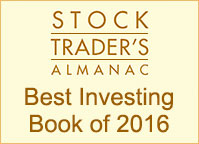Today it’s JPMorgan Chase (JPM) CEO Jamie Dimon telling a conference in Paris that the unwinding of central bank bond-buying programs is an unprecedented challenge that may be more disruptive than people think.
Tomorrow (and Thursday) it’s Federal Reserve chair Janet Yellen giving Congress her mid-year outlook on inflation, the job market, the economy, and most significant at the moment, some clue (maybe) on when the Fed will begin to reduce its $4.5 trillion portfolio of Treasury and mortgage-backed debt instruments.
Dimon was very clear in his worries about what might happen when global central banks begin to sell some of the $14 trillion in assets they bought in quantitative easing programs designed to stabilize and then jump start the global economy after the global financial crisis. “We’ve never have had QE like this before; we’ve never had unwinding like this before,” Dimon said. “Obviously that should say something to you about the risk that might mean, because we’ve never lived with it before.” So far, as Dimon noted, the financial markets don’t seem especially worried. Which is one reason that Dimon is concerned. “We act like we know exactly how it’s going to happen and we don’t.”
The Fed’s Yellen will be much more circumspect in her testimony tomorrow–since she realizes that a single phase could send markets into a repeat of the Taper Tantrum that then Fed chair Ben Bernanke set off in 2013. Financial markets will be looking for anything that might be a signal on when the Fed will begin to reduce the size of its balance sheet by, in effect, selling Treasury debt and mortgage-backed debt into the market. (The Fed has said it will begin any reduction in its portfolio by ceasing to buy new debt when instruments already in its portfolio mature.) Recent comments from several Fed officials and Yellen have suggested that the Fed is uncomfortable with current equity prices and the extremely low levels of yields on Treasury. The Fed has raised the short-term interest rates that it controls three times since December 2016 but longer term rates–such as those on the 10-year notes that benchmark mortgage rates–have stayed remarkably low. Which defeats the purpose of those Fed rate increases, no? By many of the measures that the Fed tracks monetary conditions are easier now than they were when the Fed began to raise rates back in December 2015.
The market knows that Yellen won’t say anything directly to this point, but Wall Street will be listening for anything that suggest the Fed is paying more attention to stock prices. Stocks have been propped up before and since this most recent rally by what has been called the “Fed Put,” a belief that if asset prices start to fall, the Fed will step in to support prices. Wall Street knows this put won’t go on forever but no one is ready for it to be over quite yet.
Let’s see how Yellen tip-toes around that issue tomorrow and Thursday.




